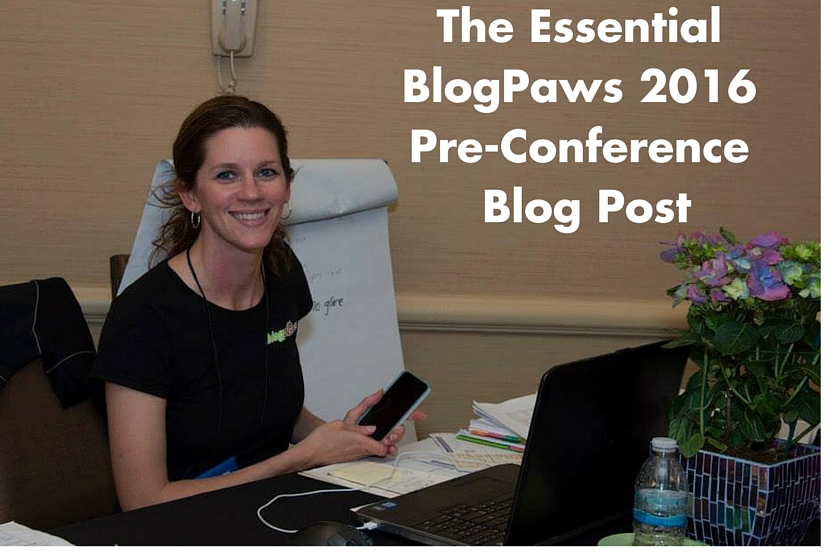The How To Pitch List
A look at how-to pitch and get your content on other blogger’s blogs or blog sites, like BlogPaws.
The concept of pitching a piece (story, and everything is a story) is not new. Freelancing is a time honored way to build a career and improve your visibility. Though we don’t tend to label the kind of pitching we do today as “freelancing“, it is. We who write for ourselves and also write for others, often for compensation, are freelancing.
This is a short list on how to pitch us or someone else.
- Check for guidelines. Most blogs that accept outside content have specific guidelines you must follow. These can include sharing past writing, offering several ideas for the publication, and allowing First North American Serial Rights.
- Know your writing/literary terms. What are First North American Serial Rights and should you give them away? What other terms involving writing and publishing should you know?
- Understand the blog. Don’t pitch a cute idea to a political blog. Don’t pitch a video montage to a strictly essay-style blog – unless there is an essay to go along with it. Do pitch content that is both relevant and relate-able.
- Be an excellent editor and proofreader. Honestly, nothing will turn off a popular blog that accepts outside content than a piece with poor grammar and punctuation.
- Understand the editorial rules of the blog you’re pitching. Does the blog say they reserve the right to edit your work at will? Are you okay with that? Finding out AFTER it’s published that several paragraphs were cut from your piece, could give you a start. Also, do they use the Chicago Manual of Style or another form of vetting content format? Do they require certain limitations on image size or purpose?
- Understand the content and context of the blog you’re pitching. Do they follow an editorial calendar? If so, how much lead time do they require for posts about Christmas or Easter? Traditionally, print publications would ask for six months lead time. It’s challenging to channel snow and sleigh bells in July, but it may have to be done if you’re doing a Christmas piece. Context relates to tone: is the blog serious, humorous, newsy; if your tone is the exact opposite, it won’t matter how great your piece it. You’ll be rejected.
- Share any other guest posts you have written. If you guest post a lot, be open, honest and proud. Share those links.
- Understand response time. Many places today do not respond to queries or pitches. That means, you did not get accepted. If accepted, you will be contacted. If you’re lucky, the blog will state the response time: we respond to queries within three weeks.
- Pitch your content appropriately. In other words, does the blog you’re pitching want a paragraph, a sentence or two, or four ideas so they can choose one? Will you have images?
- Cite your sources properly, even for images! Don’t make the blog you’re pitching have to ask if you have rights to the images or videos you are using.
- Don’t rule out previously published posts. Many places will consider them if they were highly successful when first published, and they are on-target for the blog you want to share them with. It’s best to pitch posts already published on your site, not on a site you guest blog on. But, even that can be done if it’s done correctly.
- Understand the payment process. You may not be paid for weeks. It’s not, “here’s my post, where’s my check”.
- Where there is no payment, make sure you understand the benefits of being published on that blog. If it’s a popular blog and promises or touts “increased traffic” as why you should guest post, take that with a grain of salt. It rarely happens. Still, there is respect and a certain amount of honor attached to seeing your byline on a popular blog. If that’s enough for you, go for it.
- Don’t forget to tout your social channels. You do have good social channels, yes? Blogs today want to know their writers will share across all channels on the web. And, vice-versa. Make sure they will share across their social channels also.
- Keep your ‘letter’ short and to the point. Tell the blog who you are (one or two sentences), what you write (one sentence), and why you would like to write for them. Then cite your credits and sign off. (you were planning to write a letter, yes? don’t just blindly send content anywhere!)
To get started, for those who have not yet pitched other blogs, consider allowing guest posts on your own site. Often, the best way to succeed at something new, something you’ve not done before, is to turn the tables and do it as an exercise for yourself first.
What and how would you handle guest posts? If you’ve succeeded at guest posting, share some stories with us.
Interested in guest blogging for BlogPaws? We have guidelines here.
Yvonne DiVita is a Co-Founder of BlogPaws. She is dedicated to storytelling and the human-animal bond. When not working on BlogPaws, she writes at Scratchings and Sniffings and The Lipsticking Society. You may contact her at Yvonne@blogpaws.com.
Image: Kuznetsov Alexey/Shutterstock.com




